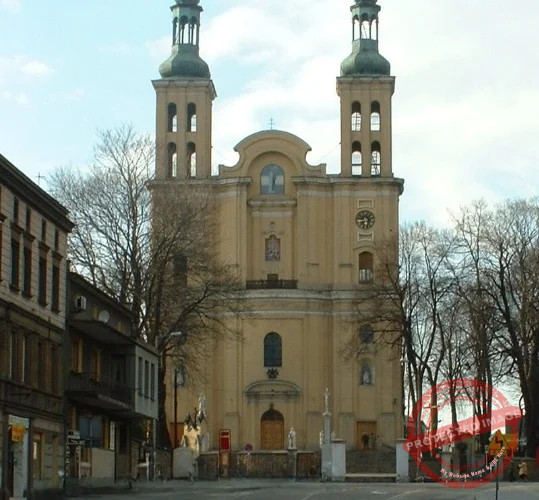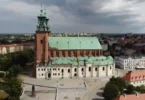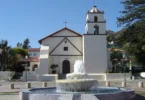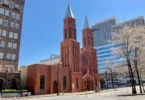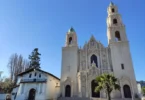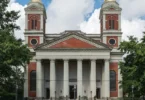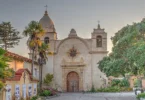Introduction
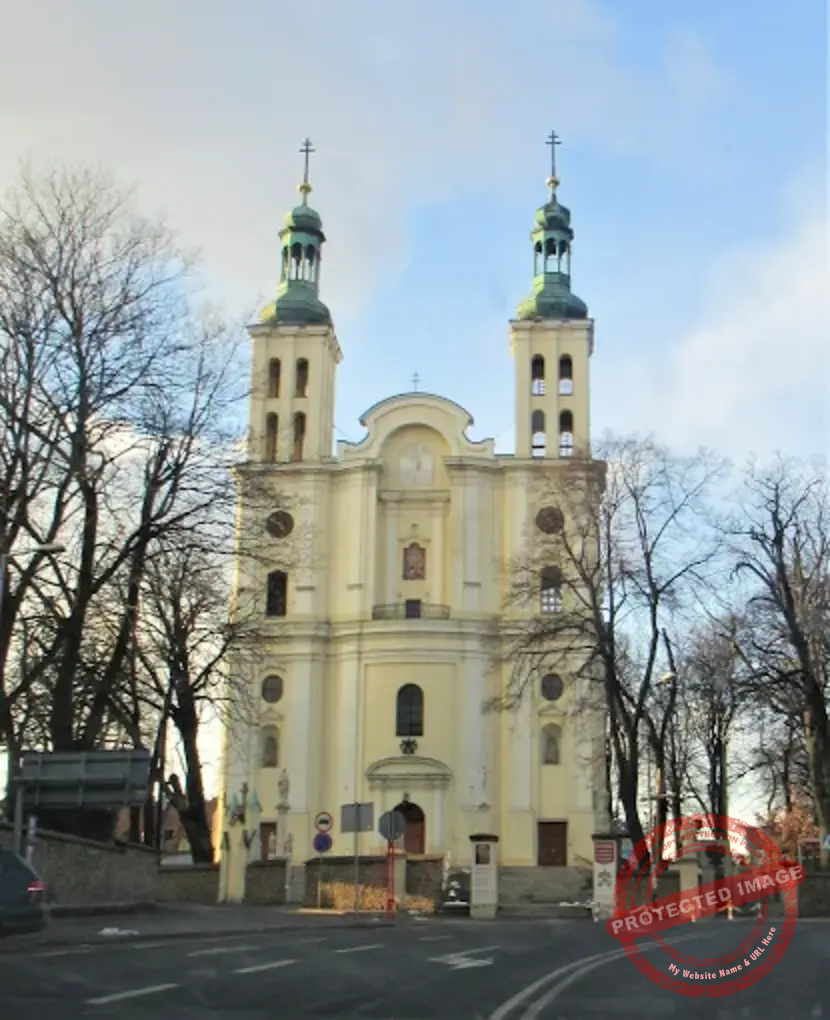
The Parish of the Nativity of the Blessed Virgin Mary is a Roman Catholic parish in the town of Pszów. It’s part of the Pszów deanery, under the Archdiocese of Katowice. Right in the heart of the town, on Bohaterów Westerplatte Street, stands the Basilica of the Nativity of the Blessed Virgin Mary. This church isn’t just a local place of worship it’s also a minor basilica and the central church of the parish itself.
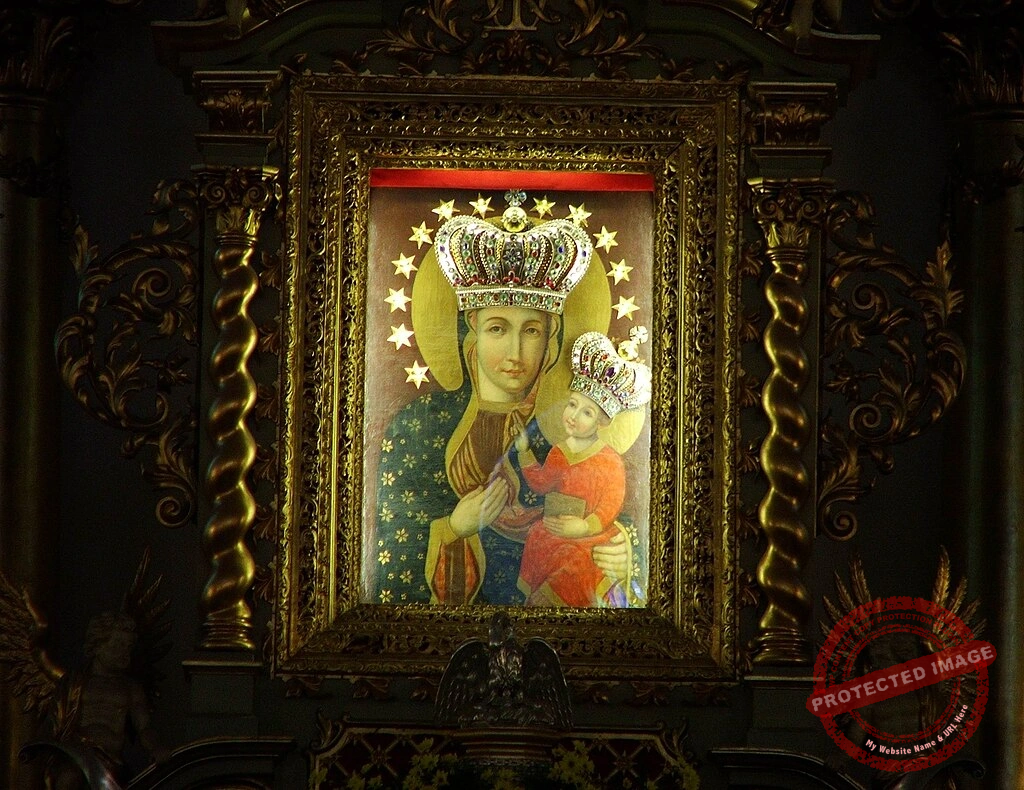
The church of the Immaculate Conception of the Blessed Virgin Mary was built between 1743 and 1747. The architect was Friedrich Gans from Karniów. The miraculous painting of Our Lady of Pszów graced the main altar in the chancel in 1750. The first tower was constructed in 1847–1848, and the second in 1849–1850. The church was given the name “Nativity of the Blessed Virgin Mary” in 1862. In 1877, 1900 and 1923 the church was painted. The towers got new domes between 1908 and 1909. In 1997, the church was declared a minor basilica by Pope John Paul II.
The painting of Our Lady of the Smiling in Pszów
The beginnings of the cult
The Smiling Lady, as the painting of Our Lady of Pszów is also known, is an oil copy of the painting of Our Lady of Częstochowa. It appeared in Pszów thanks to one of the annual pilgrimages undertaken by the residents of Pszów, led by their vicar, Jan Franciszek Niemczyk, in 1722. While in Częstochowa, they purchased a copy of the painting of Our Lady of Częstochowa, which was executed on both sides of canvas. On the reverse side was the image of St. Hedwig of Silesia – patron saint of historic Silesia. Following the custom of the time, it was consecrated by rubbing it against the original, as was common practice at the time. The painting was rolled into a roll and brought to Pszów. Upon their return, the pilgrims presented the painting to parish priest Grzegorz Puncoszek. When he unrolled the canvas, it turned out to be seriously damaged, so it lay safely in the sacristy for some time, and then was entrusted to the Wodzisław painter Fryderyk Siedlecki for restoration and framing. The result of this restoration was a great surprise, as the artist decided to give the Madonna a touch of Slavic beauty and brighten her face so that she did not too closely resemble the Madonna of Częstochowa. Thus, in 1723, on the indulgence feast of the Wodzisław parish, dedicated to Our Lady of the Scapular, the painting was blessed by Father Paweł Józef Mizia, the dean of Wodzisław , and brought in a solemn procession to the Pszów church. Afterwards, it was hung on a side pillar and served as a feretory during various processions. During this joint procession, the residents of Wodzisław and Pszów made a solemn vow at the border of these two towns (in Kokoszyce ) that the parishioners from Wodzisław would forever come to Pszów for the Feast of the Nativity of the Blessed Virgin Mary, while the parishioners from Pszów would come to Wodzisław for the indulgence of Our Lady of the Scapular. To commemorate this vow, a brick chapel with a painting of Our Lady of Częstochowa was built in Kokoszyce in 1726.
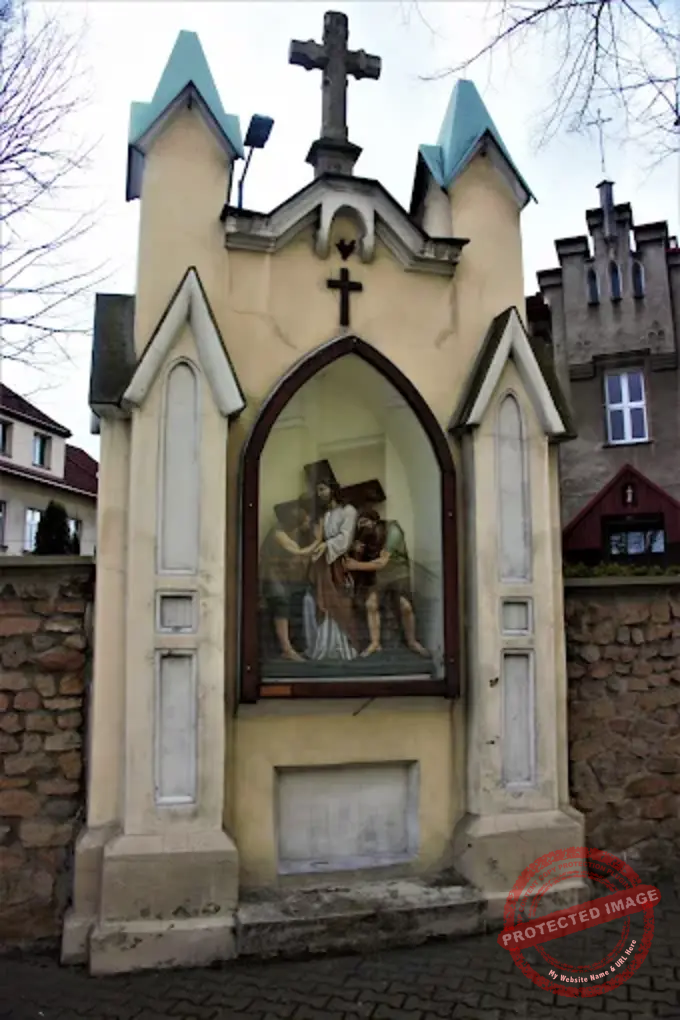
Religious cult
Inside the church stands the miraculous painting of Our Lady of Pszów (also known as the Smiling Lady), known for its miraculous healings. The painting of Our Lady of Czestochowa is reproduced in oil. Initially, the image was venerated by the local population and clergy. However, the first votive offerings from this era show that it was already well-known throughout the region by 1727-1728 due to numerous miraculous healings. The White Sunday of April 4, 1728, marked a significant turning point in the development of the cult of Our Lady of Pszów. From Easter, March 28, to May 14, 4,000 pilgrims from Lower and Upper Silesia, Poland, and Moravia visited the image, confessed, and received Holy Communion, according to parish archives. Baron Jan Bernard Welczek, the patron of the Pszów church, requested approval from the General Vicariate in Wrocaw for this development. The Wrocaw bishopric’s Bishops’ Commission held three trials between 1729 and 1730, during which witnesses who had received grace through the Madonna of Pszów’s intercession gave their accounts. The process allowed the painting to be displayed in a side altar, but it was not declared a grace-granting painting (gratiosa aut miraculosa). In July 1732, the Cistercian abbot of Rudy Raciborskie, Rudolf de Strachwitz, carried out the private coronation with gold crowns made by goldsmith Bernard Like of Raciborz and the ceremonial act of this decision.
Votive offerings
Within a short time, numerous votive offerings were placed on the painting as a token of gratitude to Our Lady of Pszów. However, the majority were confiscated by the Prussian authorities in 1809. After the dissolution of the monastery in Rudy, Father Bernard Galbierz, a Cistercian abbot, donated a gold abbot’s cross richly decorated with precious stones, as well as his prelate’s ring, which initiated a new wave of votive offerings. However, in 1976, these, along with the gold crowns, were also seized from the Pszów Madonna by thieves. As a result, a second coronation was held on September 9, 1979, with crowns dedicated by Pope John Paul II during his first pilgrimage to Poland. Four bishops, 300 priests, and approximately 10,000 faithful participated in this coronation. However, ten years after the coronation, another theft occurred, but the crowns were fortunately found and once again placed on the temple of the Lady of Pszów on September 9, 1990, by Bishop Damian Zimoń. Another coronation took place on September 8, 2002, and this one was called NOMINE ET AUCTORITATE IPSIUS SUMMI PONTIFICIS. In this ceremony, crowns were placed on behalf of the Pope based on a special letter from the relevant Vatican congregation. Archbishop Damian Zimo performed the ceremony in which John Paul II dedicated these crowns in 1979 at Jasna Góra. Also as an expression of gratitude and worship, songs were composed in honor of the Smiling Lady. The oldest one is contained in a songbook that was published in Racibórz in 1836. However, new songs are constantly being created, tailored to the times in which the worshippers of the Lady of Pszów lived.
Pilgrimage movement
In the 19th century, pilgrimages to the Marian sanctuary intensified. In 1855, Stations of the Cross were built on the church square for pilgrims, and between 1915 and 1929, a Calvary with 14 brick chapels was built in the forest 2 km from the church. In 1924, the Pszów parish was separated from the Wodzisław deanery, and a new Pszów deanery was established in Pszów, with the basilica as its seat. During the occupation of 1939-1945, all pilgrimages were banned, as was the preaching of sermons in Polish. After that period, approximately 50,000 pilgrims came to Pszów for the 1945 indulgence of the Blessed Virgin Mary. In 1968, Cardinal Karol Wojtyła, later Pope John Paul II, came to pay his respects to the Smiling Lady. Today, the Pszów sanctuary is one of five Marian sanctuaries in the Archdiocese of Katowice, which celebrate indulgence festivities on the second Sunday of September – the Nativity of the Blessed Virgin Mary; and the last Sunday of June – the Feast of St. Peter and Paul. On June 7, 1997, by decision of the Congregation for Divine Worship and the Discipline of the Sacraments, the church was granted the title of minor basilica, and on October 7, 2002, by decree of Archbishop Damian Zimoń, the Sanctuary of Our Lady Smiling was established. There is a plaque in the church commemorating the visit of Cardinal Karol Wojtyła, later Pope John Paul II.
Architecture of Basilica of the Nativity of the Blessed Virgin Mary, Pszów, Poland
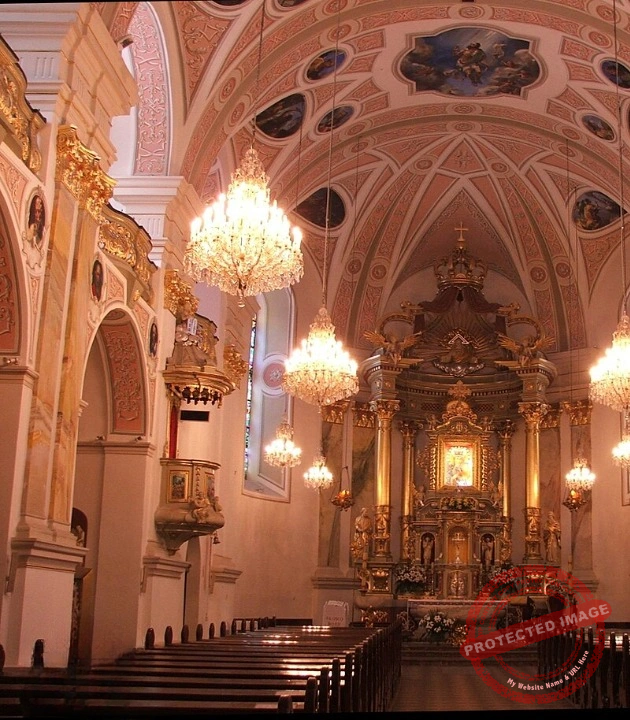
Construction of the church
When the small Church of All Saints could no longer accommodate the numerous visitors in 1743, the decision was made to build a new church according to the design of master mason Georg Friedrich Gans from Karniów. This church was completed in 1747 and consecrated in September of the same year, giving it the title of Nativity of the Blessed Virgin Mary. The solemn consecration of the main altar, on which the painting of the Pszów Madonna was hung, was performed by Bishop Philipp Gotthard von Schaffgotsch in 1750. The culmination of these exceptional events was the brief issued by Pope Pius VI on July 3, 1795, by which the Pszów church was endowed with the grace of perpetual and universal plenary indulgence for all visitors and those who prayed at this holy site. Construction of the church was not yet complete when the painting was placed in the main altar in 1750, as the façade did not yet have the towers planned in the plans. However, all these shortcomings were overcome in times of economic crisis thanks to the generosity of pilgrims, parishioners, and the abstinence movement, promoted by the Piekary parish priest, Alojzy Fick. The fully completed church was consecrated on September 14, 1862, by the Wrocław suffragan bishop, Bishop Adrian Włodarski.
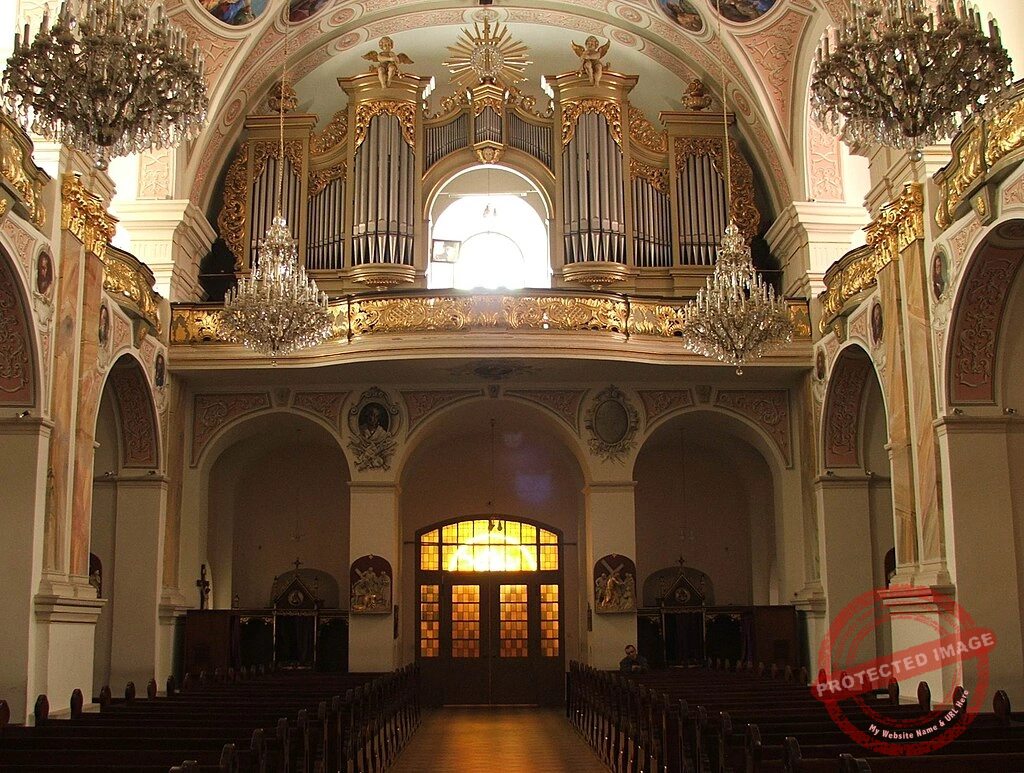
Organs in the basilica
In 1928, Paul Berschdorf of Nysa’s company constructed a 41-stop organ for the basilica. Designed as a three-manual instrument, however, due to financial difficulties, the instrument was delivered unfinished, with a temporary counter, which remained permanently. The stops of the third manual were intended to be placed above the counter. Only mock pipes remain at the moment, indicating a connection between the organ cases of the first and second manuals, as depicted in the photographs. The instrument is built in the Romantic sound aesthetic, but due to the emerging trend towards neo-Baroque organ construction at the time, it also features Baroque stops. The addition of Baroque stops to Romantic organs makes the instrument highly versatile it can be recorded to perform virtually any type of music without difficulty. The organ features five lingual stops an 8′ Trompete and a 16′ Fagott (through) on the first manual, an 8′ Trompete, an 8′ Clarinette (cover) on the second manual, and a 16′ Posaune in the pedal. In addition, the organ features the relatively rare Sesquialter 2fach, a principal-type stop. This was Johann Sebastian Bach’s favorite chorale stop. The organ actually has 38 stops because the stop pairs Bordun 16′ Zartbass 16′, Hohlfloete 8′ Bassfloete 8′, and Octave 4′ (I man) Octave 4′ (pedal) were made with the same pipes. The pressure only slightly changed depending on the register in which the choir was turned on (so-called transmissions). The prospectus includes the stop Prynzipal 16′ The organ has two manuals, whose voices are distributed between two organ cabinets. A counter is located between the cabinets. The entire organ has a pneumatic system in both the playing and register action. The pedal uses a conical windchest system, while the manuals have a pneumatic system. Despite having only 41 stops, the instrument is much louder and more massive in sound than its layout would suggest. This is due to the octave combinations – both manuals can be combined in a II/I system, as well as I/I and II/II in the Koppel combination of lower and upper octaves. The instrument underwent a significant renovation in the 1990s, which included the addition of a Glockenspiel, or organ with hanging bells, and its electrical connection to the pneumatic relay system from the first manual.
Feast Day
Feast Day : 8 September
The Basilica of the Nativity of the Blessed Virgin Mary in Pszów, Poland, celebrates its patronal feast on September 8, honoring the Nativity of the Blessed Virgin Mary. This important day for the parish is marked by special Masses, processions, and local traditions dedicated to the Virgin Mary.
Church Mass Timing
Monday to Saturday : 8:00 AM, 6:00 PM.
Sunday : 7:00 AM, 9:00 AM, 10:30 AM, 12:00 PM, 2:00 PM, 6:00 PM.
Church Opening Time:
Monday to Sunday : 6:00 AM, 7:00 PM
Contact Info
Address : Parish of the Nativity of the Blessed Virgin Mary
Bohaterów Westerplatte 1, 44-370 Pszów, Poland
Phone : +48 32 455 77 82
Accommodations
Connectivities
Airway
Basilica of the Nativity of the Blessed Virgin Mary, Pszów, Poland, to Airport Rybnik-Gotartowice Poland, distance between 25m (19.7 km) via DW935.
Railway
Basilica of the Nativity of the Blessed Virgin Mary, Pszów, Poland, to Wodzislaw Slaski train station distance between 16m (8.1 km) via Wolności and Pszowska/DW933.

